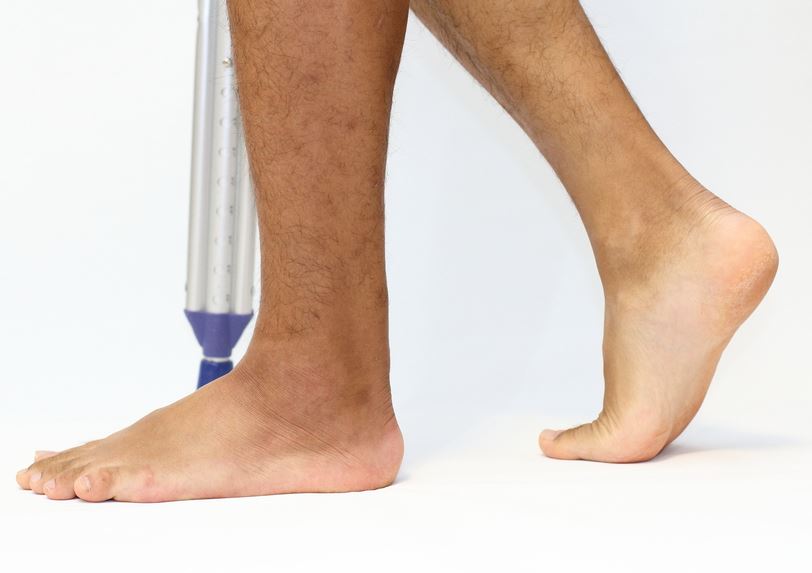The plantar Fascia is the tight band of muscle placed beneath the arch of the foot. It is the connecting tissue which holds the arch foot and extends to the forefoot. This inflammation of plantar fascia is the main cause of pain for plantar fasciitis. It is known as one of the most common reasons for heel pain and very commonly known as heel spur. Excessive stretching of plantar fascia causes the heel pain, arch pain and heel spurs.

Causes of Plantar Fasciitis
-The increasing age makes plantar fasciia it less flexible and is devoid of stretching causing the pain
-Being overweight adds extra pressure on the foot
-Wearing the wrong footwear
-Exerting your feet through sudden inclusion of exercises in your daily routine
-Being flat-feet
-The foot with a high arch
-If you are suffering from diabetes
-Passing most part of the day standing
Symptoms of Plantar Fasciitis
-Pain in the heel while taking first few steps in the morning
-Increasing physical activity leads to further pain
There are no Home Remedies on Planatar Fasciitis but you can use basic home care measures to prevent it and cure it.
Self-Care Measures for Plantar Fasciitis:
-Having an ice massage to the bottom of the foot once you start feeling the pain
-Taking up new sporting activities like swimming or bicycling other than running or jumping
-Avoid wearing shoes which look good but are not comfortable
-Wear Shoes with soft insoles which would keep your feet from overexertion
-You can also tape the area for soothing the tense areas
-Ample amount of rest
-Try losing weight so your feet bares less pressure
Stretching Exercises for plantar fasciitis:
Stretching is the best way to deal with this problem and here are some of the most common stretches to prevent plantar fasciitis –
First step for this exercise is to lean forward against a wall by keeping on knee straight and the heel on the ground. The other knee is bent and your face is trying to touch the wall. This stretches the heel cord and the foot arch. Remain in this position for 10 seconds, relax and come back to your position. You can repeat this 20 times for each foot.
Use cold-juice-can to roll your arch over it, the cold minimizes the inflammation and the massaging loosens the tense tissues
Plantar fasciitis is common and if these self care measures do not help, then you need to see a podiatrist.
Advertisement:
- Immediately relieves plantar fasciitis heel pain from plantar fasciitis & heel spurs treating pain directly at the source. Prevents plantar fasciitis from coming back.
- Distributes foot pressure evenly across the foot, reducing pressure from the forefoot to the heel as you walk.
- Targeted Ankle Foot Pain Relief: This specially designed of Comfytemp ankle ice pack wrap is contoured to fit the ankle and foot region perfectly, ensuring maximum effectiveness in relieving ankle pains caused by swelling, sprains, bruises, inflammation, and arthritis. These reusable ice packs for ankle injuries provide active pain alleviation for a range of conditions, including plantar fasciitis, achilles tendonitis, gout pain, heel spur, sprained ankles, postoperative recovery, etc.
- Upgraded One-Piece Design: Comfytemp's new ankle ice pack features an upgraded all-in-one design for easy use without additional accessories. The ice pack comes with 2 wide velcro strips to securely wrap around your ankles, perfectly adapts to the curves of your feet, providing extra compression and a deeper, more intense cooling experience. This ankle ice pack Fits 7.5"-10" ankle girth and Fits 7.5"-11" arch girth. Tips: The ice pack does not cover the heel.
- 【HEAVY DUTY SUPPORT INSOLES】Orthotic Shoe Inserts for Men Women designed for over 220lbs, provide extra stong high arch support plus shock guard technology to relieves foot & leg fatigue and reduces lower bak pain and distribute weight and reduce the impact of each step.
- 【FOOT PAIN RELIEF&PREVETION】:Orthotic inserts offers rigid arch support reduce the overstretch of Plantar Fasciitis.Helps ease stress and pain caused by flat feet,fallen arch,bunions, low back pain and diabetes.Achilles Tendonitis and also Ball of Foot pain.Provides moderate control and support in working and standing, comfort and cushioning for everyday use.
I get commissions for purchases made through links on this website. As an Amazon Associate I earn from qualifying purchases.




1 comment
Dealing With Baxter's Nerve Impingement in the Foot | Curation of Knowledge
Mar 29, 2022
[…] region of the symptoms of the Baxter’s neuritis and plantar fasciitis are ordinarily in approximately the same position so it can be challenging for any clinician to […]